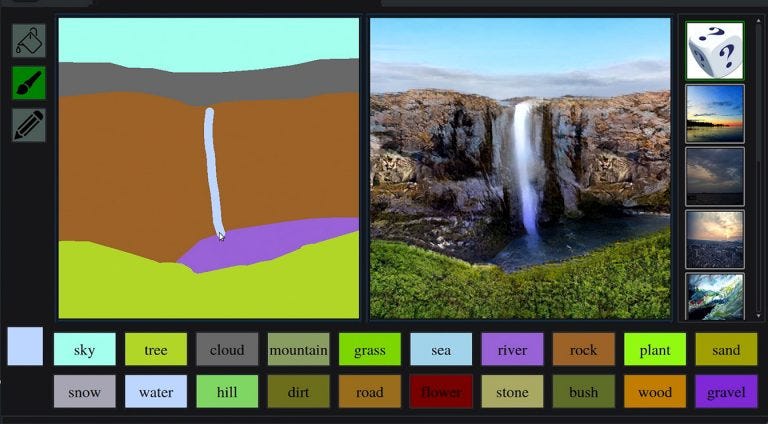Nvidia's AI Transforms Simple Doodles into Stunning Landscapes
Written on
Chapter 1: Introduction to GauGAN
Your childhood doodles in MS Paint might have been more than just playful sketches; they could have been masterpieces waiting to be realized with the right technology. Nvidia has demonstrated that artificial intelligence can take a simple doodle of a landscape and transform it into a lifelike scene that doesn't exist in reality.
Nvidia's innovative tool, named "GauGAN," cleverly combines "GAN" (generative adversarial network) with the name of the renowned post-impressionist artist Paul Gauguin. The software is designed to be user-friendly, featuring just three basic tools: a paint bucket, a pen, and a paintbrush. Users can choose a tool and then select from various material types displayed at the bottom of the interface, such as tree, river, hill, mountain, rock, and sky.
The arrangement of these materials within the doodle informs the software about the intended representation of each component, allowing it to generate a realistic image in real-time. Additionally, the program incorporates random numerical variables, ensuring that identical doodles yield different, unique results. GauGAN is optimized to run on a Tensor computing platform powered by an RDX Titan GPU, which provides the necessary computational power for real-time rendering. However, it can technically operate on any system, albeit with a longer image generation time.
Chapter 2: Understanding Generative Adversarial Networks
Generative adversarial networks (GANs) are currently a focal point in artificial intelligence research due to their potential to simplify the training process for networks. Instead of requiring a large set of labeled data, GANs consist of two competing neural networks. One network generates data, like landscapes, while the other evaluates the realism of the generated output. Over time, both networks refine their abilities, leading to increasingly realistic images. In this instance, the GAN was trained using one million images sourced from Flickr.
The outcomes are striking, though not flawless. Nvidia describes the results as "photorealistic," and while they may initially appear to depict real lakes or waterfalls, there are noticeable artifacts and unnatural edges that give them away. Nonetheless, the results surpass what most of us could achieve with basic drawing software.
Nvidia plans to incorporate GauGAN into its AI Playground suite, but additional work is needed to prepare the software for public release.
Chapter 3: Future Prospects
As AI technologies continue to evolve, tools like GauGAN open exciting avenues for creativity and design, potentially revolutionizing how we think about digital art and landscape creation.
